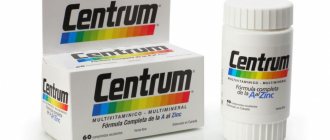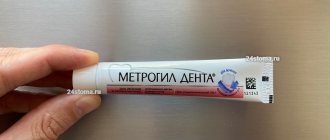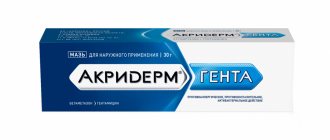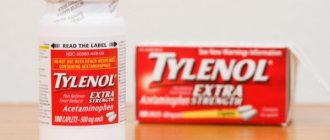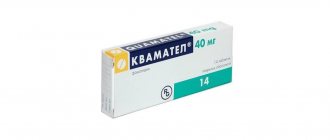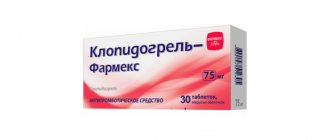Dentinox is a German drug produced in the form of a gel and solution for topical use. The sphere of influence is the oral cavity. Accordingly, due to its composition, it has an analgesic and anti-inflammatory effect on the affected mucosal tissues.
1 g of gel or solution contains up to 150 mg of chamomile extract, about 3.4 mg of lidocaine, and 3.2 mg of polyconadol 600. The solution is distributed in dark dropper bottles. The gel is packaged in tubes with a capacity of 10 g.
Pharmacological properties of the drug Dentinox-gel n
Local anesthetic of plant origin. When using the herbal remedy of chamomile infusion, the anesthetic lidocaine and polidocanol 600 (macrogol lauryl ether) in a low dose specially selected for children, pain during teething of baby teeth is eliminated. Chamomile infusion: a herbal remedy with anti-inflammatory effects in a standardized pharmaceutical form. Lidocaine hydrochloride: an anesthetic used topically in a safe dose (0.34%). Polidocanol 600 (macrogol lauryl ether): local anesthetic, is well retained on the oral mucosa and has a long-lasting therapeutic effect. Dentinox-Gel N is better distributed and stays on the mucous membrane longer. The drug does not cause dental caries.
Indications for use of the drug
Primarily due to the composition, it has an antiseptic and anesthetic effect. The drug also has an anti-inflammatory effect. It acts exclusively locally and is used strictly according to the instructions. Thanks to the composition, it significantly facilitates the process of teething of primary and primary teeth, as well as incisors. Accordingly, the drug is used in infants and children of the first year of life during teething in order to simultaneously prevent inflammatory processes and pain.
The drug is safe in its composition and does not cause allergic or other negative reactions. No side effects were identified in the instructions or during the research process. The gel can be stored for up to 5 years, but the solution can be stored for only 3. But after opening the package, the shelf life is reduced to 1 year, which in principle is quite sufficient for a specific drug and the age of the child.
In simpler terms, the medication is used mainly for the prevention of inflammatory-infectious pathologies, increases local immunity thanks to chamomile extract, and also has a time-limited analgesic effect. Dentinox gel helps eliminate irritation by acting on nerve receptors in the soft tissues of the gums. This, in turn, improves the overall well-being of the baby.
What you need to know about Dentinox
This medicine does not cause severe side effects. In general, the product is considered absolutely safe for teeth that have already erupted and for those that are just preparing to erupt. The drug does not violate the integrity of the enamel, and therefore is not capable of causing caries and other similar phenomena. It serves as a prophylactic against inflammatory pathologies such as stomatitis, and also as part of therapy to alleviate the course of the disease.
No cases of overdose have been recorded. But due to the presence of certain components, it is impossible to exceed the thresholds specified by the manufacturer, since some substances can cause bronchospasm, cardiac arrest, and angioedema. Such conditions are fraught with death.
It is noted that use in the form of a gel has a more prolonged effect than in the form of a solution, since the gel is distributed over the surface of the mucous membrane and lingers on it. This allows you to treat the painful gum area for longer. But you should understand that if you overdo it with the drug, the anesthesia can affect the tissues of the larynx and pharynx, which can lead to difficulty swallowing.
We should also talk about age restrictions. At what age can Dentinox be used? Despite the fact that the medicine is used in infants, for children under one year of age a doctor’s consultation is required. This will help prevent the development of unwanted side effects due to intolerance to the drug and its components. If these appear, you should consult a doctor. In case of emergency, call an ambulance.
Sources used:
- Guide to pediatric dentistry. — M.: Medicine
- Diseases of the teeth and oral mucosa in children / I.O. Novik. — M.: Medicine
- "Fever associated with teething." L Jaber, I J Cohen, A Mor. Archives of Disease in Childhood: short reports 1992
Reviews about the drug
Reviews about Dentinox are mostly positive. They show the effectiveness of the product in teething in infants. Parents primarily noted the rapid action of the drug in terms of pain relief. They also noted effectiveness in the treatment of stomatitis in the complex treatment of pathology. But some negative points were also highlighted, including:
- Short exposure period in some cases. Some parents noted that if the pain is intense, then this drug can relieve pain only for a short time.
- Accordingly, the frequency of use was rated low - 3 times. If the analgesic component was insufficient, this drug had only a short effect with long periods of time when the child reacted violently to teething.
- Price. The price of the drug varies from 300 to 560 rubles, which is considered a fairly expensive price range for this type of product
- In rare cases, urticaria has been reported when using the medicine. This side effect was easily eliminated with an antihistamine. No serious side effects were found.
Doctors note the effectiveness of the drug, but recommend using it only when necessary. If the child feels normal, then the frequency of administration can be reduced to 1-2 times a day, for example, only at night or in the morning and evening.
Contraindications, side effects
Instructions for use of Dentinox show that direct contraindications to the use of the product are:
- Allergy to chamomile extract and asteraceae;
- Allergy to lidocoine or related pain relievers;
- Allergy to other components of the drug;
- Fructose intolerance.
The use of Detinox with other foods and drinks does not require any restrictions. But you should follow the application rule: only after meals or just before bed. Avoid contact of the solution or gel with the eyes.
The use of the drug during lactation is not prescribed in the instructions, but it is known that it is used to relieve pain during the first eruption of different types of teeth. There is no information on use during pregnancy, since no relevant studies have been conducted.
If a larger amount of the drug was applied to the gums, then the side effects appear with greater force. In such an incident, the use of the drug is canceled completely, as well as its analogues. Next, show the child to the doctor and describe the situation. Side effects may appear in the form of local allergic-type reactions:
- Irritation;
- Hives;
- Increased sensitivity of the treated area.
In case of overdose, the following may also occur:
- Tissue swelling;
- Erythema;
- Angioedema;
- Bronchospasm;
- Anaphylactic shock (this occurs in exceptional cases).
Systemic exposure is unlikely since only a small amount of lidocaine enters the bloodstream. But nervous excitement, dizziness, loss of consciousness, insomnia, respiratory paralysis, decreased blood pressure, cardiac arrest, bradycardia, and myocardial depression can still occur with oral administration (that is, when a large amount of the drug is ingested).
If a side effect occurs, you should immediately stop using the drug, since lidocaine is considered an allergenic substance and can, under certain conditions, cause serious pathological conditions. If signs of angioedema appear, then the use of oral antihistamines is prohibited due to the risk of suffocation. It is necessary to immediately call an ambulance, which will help eliminate the consequences of an overdose or the development of an allergic reaction.
In general, there are no known cases of overdose or side effects at the moment, but if any undesirable reactions occur on the part of the child’s body, the use of the drug should be stopped. It is worth understanding that a child’s body is more sensitive to allergens and reacts to them more acutely.
Features of the drug
No negative or positive interactions of the drug with other medications have been reported. But when using other local remedies, it is necessary to maintain a pause of 15 minutes between medications. Using all medications together may reduce their effectiveness and increase the risk of side effects.
This drug is not used if the child has fructose intolerance, which is a hereditary disease. If there were patients with this pathology in the family, then it is necessary to undergo preliminary diagnostics to identify the disease. It is worth noting that analogues are used for this diagnosis. Also not used if Dentinox is contraindicated.
Sorbitol is contained in the preparation. In terms of indicators, it corresponds to a quarter of a gram of fructose. For 10g of gel, its amount is less than 0.1 bread unit. The calorie content of the substance was 2.6 kcal/g of component. When applied to the mucous membranes of the mouth, local areas of irritation may appear due to the presence of propylene glycol in the composition.
The drug is stored at temperatures below +25 degrees. Be sure to keep it away from children, as they may swallow the entire amount of the product due to the taste. If the expiration date has expired, it is prohibited to use this medicine, as its effectiveness and safety will be in doubt.
Analogues of the drug are Novocaine, Lidocaine, Kalgel, Bupivacaine Grindeks. These are all non-structural analogues, that is, their composition does not coincide or does not coincide completely. To select a specific drug, you must first consult with your doctor about contraindications and patterns of use.
Application
For stomatitis or pain, Dentinox is applied as a solution as follows:
- The hands of the person who will apply the product must first be washed with soap.
- Next, depending on the application method, drop the solution onto a cotton swab or onto a clean finger. 3 drops are enough.
- Smear the gums in the teething area with light massage movements for 30 seconds - 1 minute.
If necessary, both types, both Dentinox baby in drops and the gel, can be alternated and used during this period of teething, both primary and primary. When using gel the principle is the same:
- Wash your hands thoroughly.
- Apply the product onto your finger or cotton swab. Literally one drop, which is the size of a small pea, is enough.
- Rub the mixture into the gum where the tooth is erupting. Do this without pressure, as carefully, carefully and easily as possible.
Next, wash your hands from the product and close the bottle or tube. The procedure can be performed up to 3 times a day and only after meals, as well as before bedtime. The product is applied only in the presence of pain, if the child has a hard time with the teething process. If you are unsure about the regimen for using the medication, consult your doctor first.
Make sure that the tip of the dropper or the area around the entrance of the tube does not touch the skin. Otherwise, there is a risk of contamination of the contents.
If you forget to apply Dentinox Baby to the treatment area, then under no circumstances should you apply a double dosage. This can cause severe side effects. If a dose is missed, simply continue to use the medication according to the standard regimen after the next feeding.

